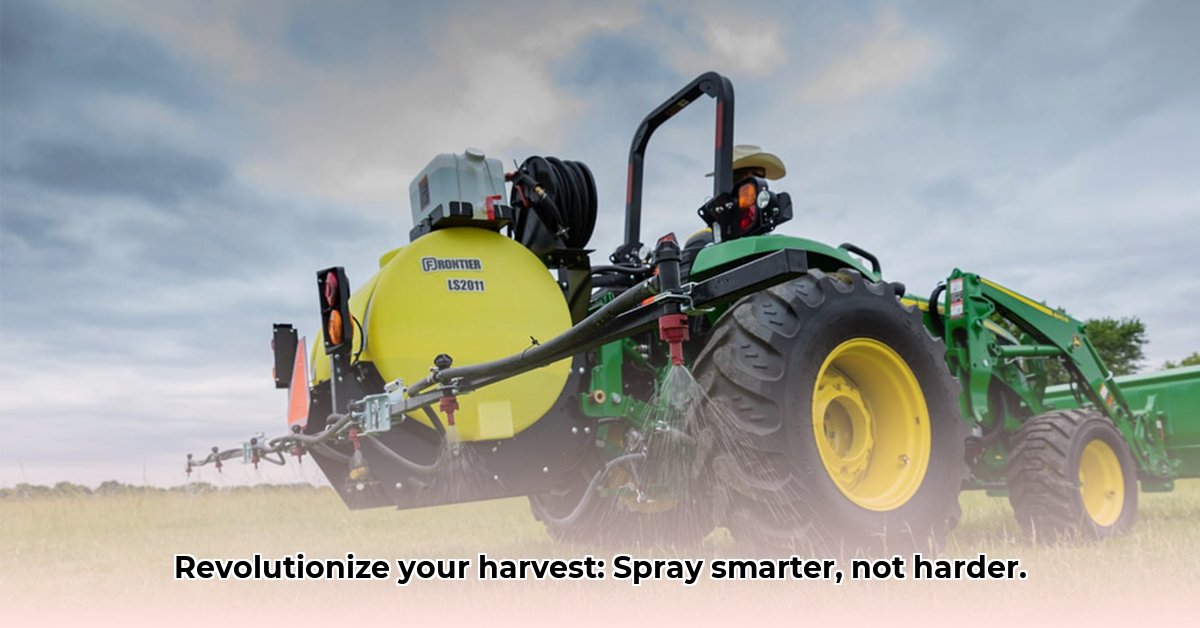
Tractor-Mounted Sprayer Technology: A Modern Approach to Sustainable Agriculture
Efficient crop protection is paramount in modern sustainable agriculture. Tractor-mounted sprayers are a key technology driving this efficiency, allowing farmers to protect their crops from pests and diseases while minimizing environmental impact. This article explores the mechanics, benefits, and environmental considerations of these systems, offering practical guidance for sustainable practices. For information on related equipment, check out this link on tractor mounted trenchers.
Understanding Tractor-Mounted Sprayers: The Mechanics of Precision Application
Tractor-mounted sprayers are sophisticated systems designed for precise and efficient chemical application. They consist of several key components: a tank (ranging in size from dozens to hundreds of gallons), a pump to generate the necessary pressure, and a boom with nozzles that create various spray patterns. Different nozzle types (e.g., flat fan, hollow cone) are selected based on the application and target area, influencing coverage and drift. Selecting the appropriate nozzle is crucial for minimizing waste and environmental impact.
Efficiency and Productivity Gains: Time, Labor, and Cost Savings
Compared to manual or less efficient methods, tractor-mounted sprayers offer substantial benefits. They significantly reduce labor costs and time spent on application, allowing farmers to cover large areas quickly. Consistent and even coverage ensures that every plant receives the necessary treatment, leading to improved yields and healthier crops. Studies show time savings of up to 75% and labor cost reductions of over 60% compared to manual spraying.
Precision Application Technologies: Optimizing Chemical Use
Modern tractor-mounted sprayers utilize advanced technologies to minimize chemical use and optimize distribution. Global Positioning System (GPS) guidance systems act as a built-in autopilot, guiding the sprayer along pre-programmed paths to prevent overlaps and ensure consistent coverage. Furthermore, Variable Rate Technology (VRT) uses sensors and mapping data to adjust chemical application based on the specific needs of different areas within a field. This targeted approach minimizes chemical waste and environmental impact.
Environmental Considerations and Mitigation Strategies: Minimizing Risks
While highly efficient, tractor-mounted sprayers present potential environmental risks. Chemical runoff, pesticide drift, and harm to beneficial insects are key concerns. However, responsible application minimizes these risks. Strategies include utilizing low-drift nozzles, establishing buffer zones around water bodies, adhering to chemical application guidelines, and ensuring proper chemical storage and disposal. Alternative application methods, such as drone spraying, are also emerging as more sustainable options. A Risk Assessment Matrix can help identify and mitigate potential environmental risks.
| Risk Factor | Mitigation Strategy |
|---|---|
| Chemical Runoff | Establish buffer zones; use targeted application techniques; minimize tillage |
| Pesticide Drift | Use low-drift nozzles; apply chemicals only under favorable weather conditions. |
| Harm to Beneficial Insects | Utilize selective pesticides; integrate pest management strategies (IPM) |
| Improper Chemical Disposal | Always follow local regulations; use approved disposal sites. |
Sustainable Practices and Future Trends: Shaping the Future of Agriculture
The future of sustainable agriculture depends heavily on continuous innovation. Research and development efforts focus on creating more environmentally friendly chemicals and alternative pest and weed control methods. Regulatory compliance and responsible chemical management are crucial. The integration of AI and machine learning in sprayers aids in predictive maintenance and optimization, enhancing efficiency and reducing environmental impacts.
Actionable Recommendations: A Collaborative Approach
Sustainable spraying requires a collaborative effort:
- Farmers: Invest in training, adopt GPS and VRT technologies, and implement integrated pest management (IPM).
- Suppliers: Provide comprehensive training, promote sustainable products, and offer support for responsible usage.
- Regulatory Bodies: Enforce regulations, invest in research, and provide incentives for sustainable practices.
- Researchers: Continue developing environmentally friendly technologies and alternative control methods.
By adopting responsible practices and embracing technological advancements, we can harness the benefits of tractor-mounted sprayers to enhance crop yields while safeguarding the environment. The future of agriculture lies in balancing efficiency and sustainability.